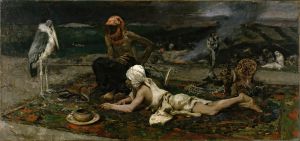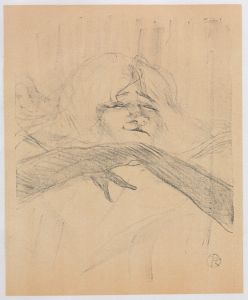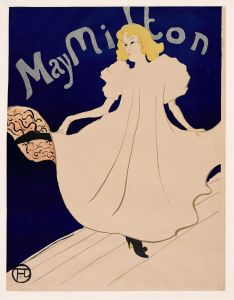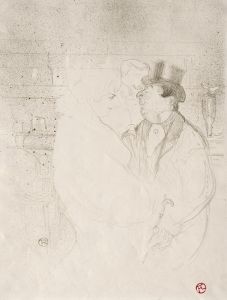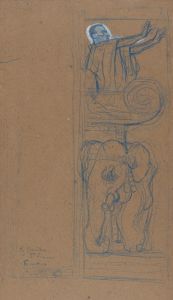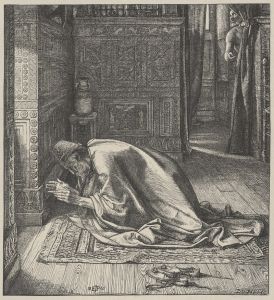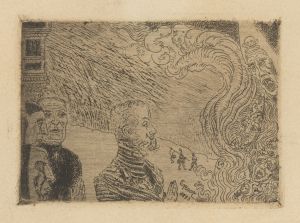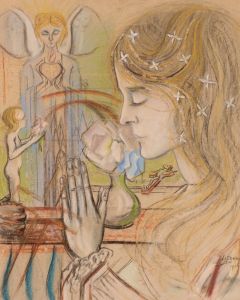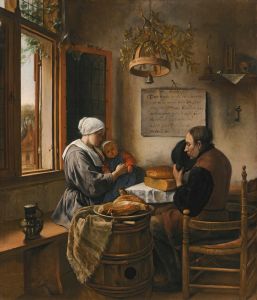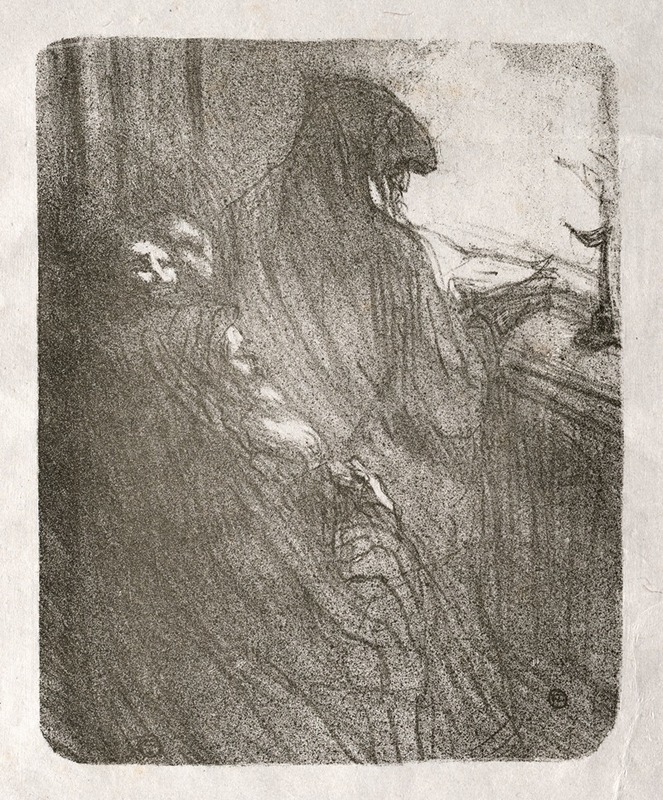
Au pied du Sinaï: La Prière des Juifs Polonais
A hand-painted replica of Henri de Toulouse-Lautrec’s masterpiece Au pied du Sinaï: La Prière des Juifs Polonais, meticulously crafted by professional artists to capture the true essence of the original. Each piece is created with museum-quality canvas and rare mineral pigments, carefully painted by experienced artists with delicate brushstrokes and rich, layered colors to perfectly recreate the texture of the original artwork. Unlike machine-printed reproductions, this hand-painted version brings the painting to life, infused with the artist’s emotions and skill in every stroke. Whether for personal collection or home decoration, it instantly elevates the artistic atmosphere of any space.
Henri de Toulouse-Lautrec, a prominent French painter known for his vivid portrayal of Parisian nightlife in the late 19th century, created a diverse body of work that extends beyond his famous depictions of the Moulin Rouge and other cabaret scenes. One of his lesser-known works is "Au pied du Sinaï: La Prière des Juifs Polonais" (At the Foot of Sinai: The Prayer of Polish Jews). This painting reflects Toulouse-Lautrec's exploration of themes outside his usual focus, showcasing his versatility as an artist.
Henri de Toulouse-Lautrec was born on November 24, 1864, in Albi, France, into an aristocratic family. Despite suffering from health issues that stunted his growth and left him physically disabled, he pursued a career in art, studying under prominent artists such as Léon Bonnat and Fernand Cormon. Toulouse-Lautrec became a central figure in the Post-Impressionist movement, known for his innovative use of color and line, as well as his ability to capture the essence of his subjects with remarkable clarity and empathy.
"Au pied du Sinaï: La Prière des Juifs Polonais" is a testament to Toulouse-Lautrec's interest in cultural and religious diversity. The painting depicts a group of Polish Jews engaged in prayer, set against the symbolic backdrop of Mount Sinai, a site of great significance in Jewish history as the place where Moses received the Ten Commandments. This work is notable for its respectful and empathetic portrayal of a community that was often marginalized in European society at the time.
The painting is characterized by Toulouse-Lautrec's distinctive style, which combines elements of Impressionism and Symbolism. His use of color and light creates a somber yet reverent atmosphere, emphasizing the spiritual intensity of the scene. The figures are rendered with a sensitivity that highlights their individuality and collective devotion, capturing a moment of profound religious significance.
Toulouse-Lautrec's decision to depict Polish Jews in prayer may have been influenced by the broader cultural and social currents of his time. The late 19th century was a period of significant upheaval and change in Europe, with many artists and intellectuals exploring themes of identity, tradition, and modernity. By focusing on a Jewish community, Toulouse-Lautrec contributes to a broader artistic dialogue about cultural diversity and the complexities of religious life.
While "Au pied du Sinaï: La Prière des Juifs Polonais" is not as widely recognized as some of Toulouse-Lautrec's other works, it remains an important part of his oeuvre, illustrating his ability to engage with a wide range of subjects and themes. The painting serves as a reminder of the artist's empathy and curiosity, qualities that allowed him to transcend the boundaries of his immediate environment and explore the rich tapestry of human experience.
In summary, "Au pied du Sinaï: La Prière des Juifs Polonais" by Henri de Toulouse-Lautrec is a significant work that highlights the artist's interest in cultural and religious themes. Through his sensitive portrayal of Polish Jews in prayer, Toulouse-Lautrec demonstrates his ability to capture the spiritual and emotional depth of his subjects, contributing to a broader understanding of cultural diversity in the art of the late 19th century.







